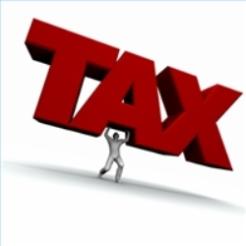NCVO and others are concerned that a retail tax relief on social investment proposed by government could incentivise people to invest money rather than give it, if the relief is more attractive than the current gift aid for higher-rate taxpayers.
Last month, Prime Minister David Cameron launched a Treasury consultation on a social investment tax relief for individual investors into social enterprises, which suggests mirroring existing tax reliefs for investors, such as the Enterprise Investment Scheme and Venture Capital Trusts.
This week, a meeting was held at the Treasury for sector stakeholders to discuss the consultation and how it affects investees such as charities and social enterprises.
Charlotte Ravenscroft, head of policy and research at NCVO, who attended the meeting, told civilsociety.co.uk the body was very supportive of the consultation, first announced in this year’s Budget, but said the detail needed to be right.
She said the level at which the social investment tax relief was set was a very important factor: “The question is whether it will attract new investors who have not considered investing into charities or social enterprises before, or whether it will take away donations from charities as people decide to invest instead.”
She said it will need to be considered whether a social investment tax relief is more generous than gift aid for higher-rate taxpayers, or less. “NCVO is consulting with its members on this,” she said.
Ravenscroft also said that NCVO was worried about the proposed size limit of 250 employees for an organisation to benefit from the proposed social investment tax relief. “This would exclude many larger charities keen to engage with social investment,” she said.
Lucy Findlay, managing director at Social Enterprise Mark, who also attended the Treasury meeting, said she did not see the point of a limit on employees, or a proposed cap on turnover.
Definition of social enterprise
Findlay also expressed concern about how government proposes to define which type of organisations should benefit from a social investment tax relief. Currently, the Treasury consultation proposes whether a definition of social enterprise for tax purposes should comprise community interest companies, community benefit societies and registered charities or an alternative.
Findlay said: “Government is keeping it tightly to regulated organisations. They are defining on legal and regulatory structure, not social and environmental objectives.”
“Some co-operatives structures and companies limited by guarantee are excluded from the government’s list. Around 50 per cent of Social Enterprise Mark holders do not currently qualify for the social investment tax relief.”
But she also added that she understood that the Treasury would want to make sure that a new tax relief was not easily open to abuse, so it may prefer a tight definition for social enterprise.
Findlay said she would suggest to government that it use the Social Enterprise Mark criteria to define which organisations should benefit from any social investment tax relief: “The Mark checks the social purpose, and what happens to profit,” she said. “And if the government felt that the Mark needed more robustness for this purpose we’d look at it.”
Last year, a Ministry of Justice contract seeking to increase social enterprise involvement in a £275m programme used the Social Enterprise Mark criteria to define what a social enterprise is.
£200,000 limit on social investment 'too low'
Ravenscroft from NCVO said her organisation did not take a strong view on a definition, but was open to it being more inclusive if it could work in legislation.
Ravenscroft also said that NCVO was concerned that proposals to limit the amount of social investment eligible for tax relief in a year to £200,000 per organisation was too low. “A lot of charities will be wanting to raise more overall from investors,” she said.
NCVO plans to consult with its members and respond to the consultation which closes in September.
Two further meetings are planned at the Treasury to discuss the consultation.









